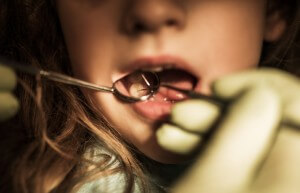
Since February is American Heart Month, you’ve probably heard a lot about cardiac health in the past four weeks. Our nation’s healthcare focus has been on the prevention, treatment, and awareness of heart conditions. But at Meyer & Johns Dental, that awareness extends throughout all 12 months.
We take special precautions for our patients with heart conditions, and may ask you questions about any new diagnoses, existing conditions or ongoing treatments. And it’s important for us to know, because there are numerous unexpected heart complications that can arise from routine dental procedures.
Heart Conditions
Sometimes during normal cleanings, minor bleeding can occur in the mouth. This could allow oral bacteria to enter the bloodstream, potentially making its way to the heart. In heart patients, this increases the risk of endocarditis, which is inflammation of valves or tissue within the heart. In some cases, an antibiotic may be recommended before any visit to the dentist, according to the American Heart Association.
Heart Attack
The general advice for heart attack survivors is a six-month waiting period before having any dental treatments or procedures. As always, it’s important for those patients to let us know about any medications they’re taking, particularly blood-thinners or other anti-coagulants. Even basic conditions that include irregular heartbeat (including some heart mumurs) can present problems unless your dentist is aware of them.
As always, out top priority at Meyer & Johns Dental is the safety and comfort of our patients. Please help us by keeping our staff updated of any changes in your overall health (especially heart conditions). We look forward to making sure your mouth – and the rest of you – stays healthy!


